The half frame Olympus Pen EE was introduced between 1961 and 1966. Although it uses 35mm film the frame size is half that of a standard 35mm camera allowing a maximum of 72 frames with a single loading.
The half frame Olympus Pen EE was introduced between 1961 and 1966. Although it uses 35mm film the frame size is half that of a standard 35mm camera allowing a maximum of 72 frames with a single loading.
Olympus Pen EE
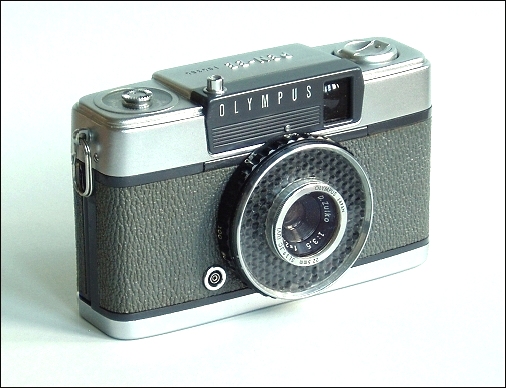
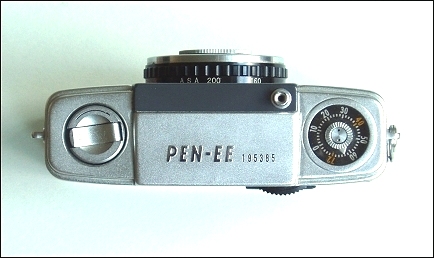
The basic idea for this camera was to take the original Pen and to make it more automatic. A meter was added to allow for automatic exposure. Film speeds (from 10 to 200 ASA) can be selected and the selenium meter surrounding the lens sets the correct aperture. The shutter speed is fixed at 1/60th sec. For flash photography the opposite side of the film speed dial allows for over-riding the meter and manual selection of the f-stop. The available apertures are from f3.5 to f22.
Since this is a half-frame camera the standard lens has a focal length of 28mm f3.5. This shorter focal length and subsequent greater depth of field means that acceptable pictures can be taken without the need for focusing. In effect, 'automatic' focusing.
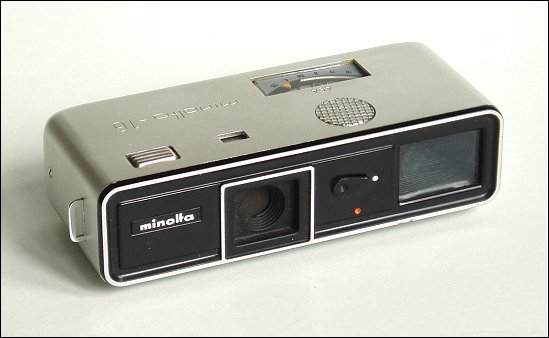
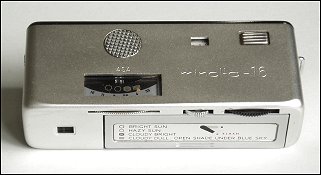
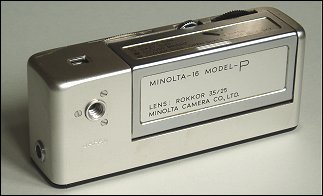
Although this camera is badged as a model-P it is in fact a model Ps identified by its two-speed shutter lever on the front panel. For some reason Minolta didn't change the badge on its next model.
The Minolta-16 Ps is a subminiature camera made in 1964 for their 16mm instant-load film cartridges and is a two-speed version of the earlier Minolta 16-P which had been launched 4 years earlier together with the Minolta-16 using the same 16mm film. It has a three-element 1:3.5/25mm fixed focus Rokkor lens. The short focal length gives sufficient depth of field for most subjects within the range 1.5m to infinity.
Two shutter speeds are provided and selected by the small lever on the front panel. The position indicated by the white dot represents 1/100sec and is intended for daylight shots whereas the red dot represents 1/30sec for use with flash.
Film speed settings range from 12ASA to 200ASA and is mechanically linked to a four position cloud symbol, the selection of which sets the aperture.
The camera produces 20 images, 14mm x 10mm. Since these images are centrally located along the length of the film, the film cartridge can be re-loaded with either single or double perforated 16mm cine film at minimal cost.
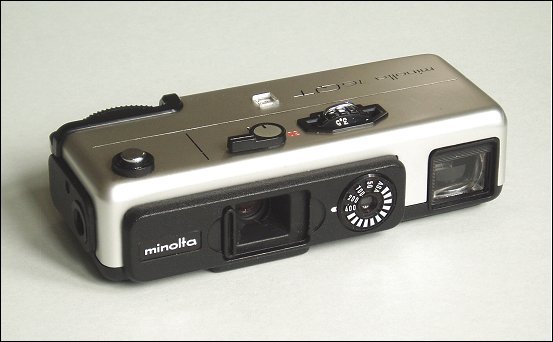
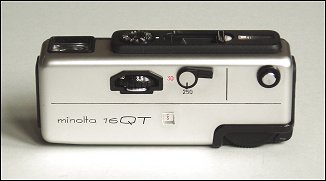
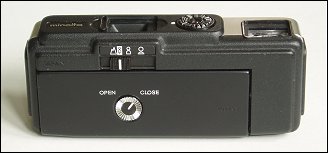
Introduced in 1972, the Minolta 16QT was the last of the Minolta 16mm cameras and arrived just before Kodak changed the market with the introduction of 110 film.
The two shutter speeds of 1/250th and 1/30th (for low light or flash) are adjusted by a lever on the top of the camera. The 23mm Rokkor lens has apertures from f3.5 to f22 adjusted by a thumbwheel next to the shutter speed lever. It is the only Minolta 16mm camera with adjustable focusing and is set by a slider switch on the underside of the camera. There are four zone focusing icons for head (4 feet), upper body (7 feet), full person (12 feet) and mountain (30 feet +).
The camera takes 18 exposures, 12mm x 17mm quarter frame (110 cameras have a frame size of 13mm x 17mm). Because of its larger frame size compared with earlier models, coupled with its excellent Rokkor lens, the 16QT yielded noticeably better image quality.
The same film cassette was used as in previous models. However, if the cassette was reloaded, it had to be with single perforated cine film as the perforations on one edge of double perforated film would encroach on the image area.
Despite it's features and quality lens the 16QT could not compete with the new, cheaper 110 cameras that came onto the market shortly after its introduction.